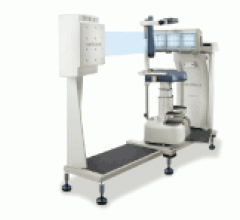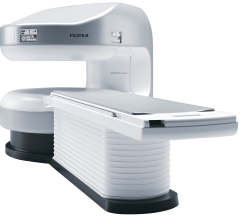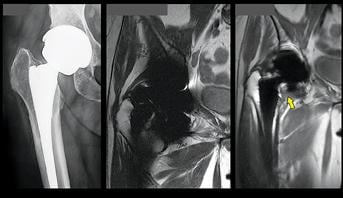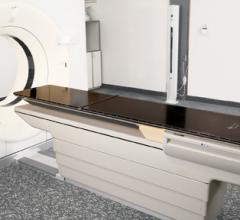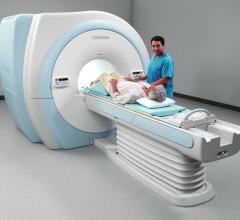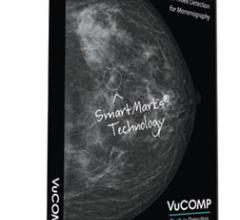Philips Healthcare launched the Epiq ultrasound system, a first-of-its-kind ultrasound architecture that offers a new approach to creating ultrasound images. Making its debut at the European Society of Cardiology (ESC) 2013 Congress in Amsterdam, Epiq features a new imaging technology called nSIGHT that, when combined with Philips' new Anatomical Intelligence technology, delivers faster speed and improved image clarity. It has received 510(k) clearance from the U.S. Food and Drug Administration (FDA).
To counter the significant levels of morbidity and mortality associated with pericardial disease (disease of the sac around the heart), experts from the American Society of Echocardiography (ASE), the Society for Cardiovascular Magnetic Resonance (SCMR), and the Society of Cardiovascular Computed Tomography (SCCT) came together to review evidence and provide future guidance to clinicians. For the first time, an expert consensus statement on the appropriate use of multimodality imaging in the diagnosis and management of pericardial diseases will be published in the September issue of the Journal of the American Society of Echocardiography (JASE). The writing group was chaired by Allan L. Klein, M.D., FASE, director of Cardiovascular Imaging Research and the Pericardial Center and an echocardiographer from the esteemed Cleveland Clinic in Cleveland, Ohio.
Digirad Corp. and Dilon Diagnostics have signed an exclusive international distribution agreement for Dilon to distribute Digirad's lines of nuclear imaging cameras. .
Fujifilm’s APERTO Lucent is a 0.4T mid-field, open MRI system addressing today’s capability and image quality needs ...
Earlier this year my brother-in-law bought a pick-up truck. Its six-cylinder engine saves fuel by running on four cylinders. A computer chip fires up the other two cylinders when accelerating, then turns them off when cruising.
The processes within a radiology practice are numerous and complex, and many of them can require extended periods of time. There is the time that is needed to wait for imaging orders — more time if written orders are illegible and require additional correspondence between the referring physician and radiologist. Time is also lost waiting for films and cassettes to be received and uploaded to the picture archive and communications system (PACS), and still more time is needed for second opinions if required. Collectively, the time that these individual processes take often leads to longer turnaround time, which can result in patient anxiety, medical error and increased medical costs.

SPONSORED CONTENT — Fujifilm’s latest CT technology brings exceptional image quality to a compact and user- and patient ...
In March, Carestream conducted a commissioned survey[1] of U.S.-based medical patients measuring consumer attitudes toward patient portal technologies. I had the opportunity to discuss the results and their significance to the industry with Cristine Kao, Carestream Health’s marketing manager for global healthcare IT.
SPONSORED CONTENT — Fujifilm’s latest CT technology brings exceptional image quality to a compact and user- and patient ...
Healthcare’s shift away from traditional fee-for-service reimbursement models and toward value-based payments is well under way. Case in point: The Centers for Medicare & Medicaid Services (CMS) recently announced that 106 new accountable care organizations (ACOs) have begun operations, bringing the total number of Medicare Shared Savings Program participants to more than 250. ACO growth has also gained a foothold in the private sector, with 428 organizations now operating in 49 states.
Confidence is an important part of a radiation therapy planning session, especially when a facility is treating as many as 30 patients or more per day. Knowing you are using the best products available and providing patients with the best technology and treatment possible can increase that confidence. When Agnesian Healthcare Cancer Care Services in Fond du Lac, Wis., installed Civco’s Universal Couchtop on its computer tomography (CT) and advanced linear accelerator (linac) platforms, confidence in its treatment technology was boosted in numerous ways.
Today’s remote viewing systems will stimulate changes and challenges in healthcare in a manner similar to what online banking has done for the financial industry. The areas of improvement include safe, secure, remote access from any browser, or ultimately any mobile device. This is the reality of today, and it comes without the need for special applications or image and associated data downloads from virtually any source.
SPONSORED CONTENT — EnsightTM 2.0 is the newest version of Enlitic’s data standardization software framework. Ensight is ...
When physicians began utilizing advanced visualization, the software was limited to academic institutions and large hospitals. It was part of a dedicated workstation with dedicated hardware, making the technology a standalone application that was not typically utilized beyond the walls of the department where the workstation was located. Physicians would retrieve digital imaging and communications in medicine (DICOM) images from a modality and then work on the images at the workstation.
South Jersey Radiology Associates, P.A., (SJRA) is a leading private practice located in the Southern New Jersey corridor near Philadelphia. With nine imaging centers and 45 full- and part-time radiologists, SJRA provides a full complement of medical imaging services — from standard X-rays to the most complex procedures. SJRA also covers three hospitals totaling 500 beds in the Virtua Health System. Bill Muhr, M.D., president and CEO of SJRA, recently spoke about the implementation of the Qualitative Intelligence and Communications System (QICS) offering from peerVue.
The variety of radiation therapy options continues to grow with the development of treatment planning software, imaging systems for guidance, linear accelerators and more. The external-beam radiation therapy (EBRT) market includes many different types of treatment, from traditional whole-body irradiation (WBI) to conformal radiation therapy (3-D CRT) and intensity-modulated radiation therapy (IMRT). Despite a major decline in 2009, the U.S. radiation therapy market is bouncing back, according to a study published in July by IMV Medical Information Division.[1] Improvements in technologies are helping to drive activity as clinics and hospitals implement advanced techniques to more accurately target and treat cancers.
Did you know that approximately one-third of all the data in world is created by the healthcare industry and that ...
Beatriz Amendola, M.D., FACR, FASTRO, radiation oncologist, medical director, Innovative Cancer Institute (ICI), decided to work in solo practice in 1999 after moving from Philadelphia to Miami. In Miami, she found there were no privately owned, freestanding facilities offering radiology oncology services to patients. All services were either rendered through a hospital or through a university. That is when Amendola decided to start her own practice, founding the Brachytherapy Center of South Florida in 2002, which is mostly dedicated to the management of early breast cancer and skin cancer using brachytherapy.
In the past 20 years there have been considerable improvements in the treatment of prostate cancer. As it is across all radiation oncology, techniques have evolved from conventional external beam radiation therapy (EBRT), to more targeted therapies that are delivered in fewer visits. One of the latest notable trends in radiotherapy is the emergence of real-time image guidance for intensity-modulated radiation therapy (IMRT). For prostate cancer, radiotherapy is often deployed in conjunction with surgery (prostatectomy) or as curative therapy, depending on the stage of disease. As these new techniques emerge, it becomes more important for clinicians to identify which ones work most effectively and for which patients.
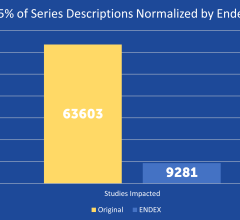
SPONSORED CONTENT — EnsightTM 2.0 is the newest version of Enlitic’s data standardization software framework. Ensight is ...
The issue of ionizing radiation in medical imaging is often discussed and is a hotly debated topic. Computed tomography (CT) is the major contributor to medical radiation dose exposure and has been vilified in lay and professional press as a danger to those exposed, potentially carcinogenic and most dangerous in children. As a pediatric radiologist, my primary concern is in producing high-quality diagnostic images with radiation dose as low as reasonably achievable (ALARA).
Injured soldiers returning from combat now have access to more advanced magnetic resonance (MR) technology with Toshiba’s Vantage TitanTM 3T MR. Winn Army Community Hospital in Fort Stewart, Ga., installed the system for general, musculoskeletal and body imaging. This acquisition marks the 1,600th Vantage MR installed worldwide and the 500th installed in the U.S.
Hodgkin lymphoma survivors who received certain radiation and chemotherapy regimens were at increased risk of subsequently developing stomach cancer, according to a study by scientists at the National Cancer Institute (NCI), part of the National Institutes of Health. The study appeared Aug. 26, 2013, in the Journal of Clinical Oncology.
Experts have found that radiation dosage can have serious complications for patients with cancer. Cancer patients who receive chest radiation should be evaluated for heart disease before beginning radiation, and every five to 10 years afterward, according to the American Society of Echocardiography (ASE) and the European Assn. of Cardiovascular Imaging (EACVI) of the European Society of Cardiology (ESC). This expert consensus statement on the use of imaging to detect radiation-induced heart disease (RIHD) will be published in the September issue of the Journal of the American Society of Echocardiography (JASE). The writing group was co-chaired by Vuyisile Nkomo, M.D., an echocardiographer from the renowned Mayo Clinic in Rochester, Minn.
August 28, 2013 — VuComp Inc. announced it has installed its advanced computer-aided detection (CAD) system, M-Vu CAD, at Allison Breast Center in Richmond, Va. Women in the region will have access to the world’s most advanced tools to help detect breast cancer as early as possible in order to achieve the best outcomes. VuComp’s M-Vu system analyzes mammographic images and marks suspicious areas using sophisticated mathematical algorithms.
August 28, 2013 — Sorna Corp. released the SDS (Secure DICOM Share), a new and innovative feature of the eXpedo software suite. eXpedo with SDS enables healthcare facilities to send DICOM (digital imaging and communications in medicine) studies and reports directly from one site to another through eXpedo, utilizing the DICOM TLS Secure Transport Connection Profile.

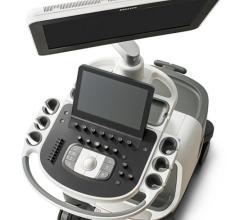
 August 30, 2013
August 30, 2013 

